Museum





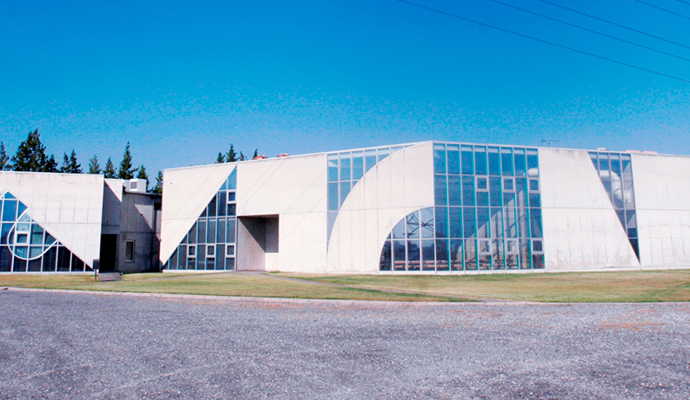
The Japan Ukiyo-e Museum collects, preserves, classifies and exhibits ukiyo-e, a cultural heritage cherished all over the world. Ukiyo-e records the mores and customs of bygone days and its iconography sums up Japan's artistic wisdom, exerting formative influence on Impressionist painters and enriching world culture.
Indeed, ukiyo-e furnishes useful hints to Japan,s future contributions to the increasingly globalizing world.
The word, ‘ukiyo’, originally meant a ‘melancholy world’ but, in the Edo period, came to refer to a ‘floating world’ with its ephemeral pleasures. Featuring characters, such as courtesans, familiar in genre-painting, ukiyo-e reflected this new conception of the transient world.
At first, ukiyo-e were produced as book illustrations or as simple monochrome single-sheet prints. In the latter half of the 17th century, more artistic prints came to be produced by skilled craftsmen, who tended not to sign their work. The craftsmen of this period are called Kanbun -kyosho (Kanbun masters).
With Hishikawa Moronobu, who described himself as Yamato-eshi (Yamato picture master), ukiyo-e came into its own by assimilating the styles of the Tosa school and the Kano school. The Museum houses examples of Moronobu's bijin-ga ( images of beauties) and scroll painting. Torii Kiyonobu, who worked in theatre, established the genre of yakusha-e (actor prints)and founded the Torii school.
The 18th century saw the appearance of Kaigetsudo Ando, who liked to paint gorgeously dressed concubines. Ando was only ever a painter, but his disciples produced some superb woodblock prints. The Museum has many excellent pictures and prints of the Kaigetsudo school.
Learning from the Hishikawa, Torii and Kaigetsudo schools, Okumura Masanobu established his own style by producing uki-e (looming pictures) with recourse to perspective, and by creating numerous mitate-e (allusive pictures).
In 1765, it became fashionable among hatamoto (retainers of the shogun) and rich bourgeois to exchange egoyomi (calendar prints), and costly, lavish nishiki-e (multicolour woodblock prints) were produced.
Suzuki Harunobu produced many bijin-ga that featured somewhat androgynous-looking women,and mitate-e.
Torii Kiyonaga realistically painted bijin-ga of willowy beauties and produced some 30 prints of degatari-zu (pictures of narrators' appearance) of kabuki theatre.
Tsutaya Juzaburo, publisher of Yoshiwara saiken (Yoshiwara guide), discovered Sharaku and issued beautiful yakusha-e. He subsequently brought out the bijin-ga of Kitagawa Utamaro with great success.

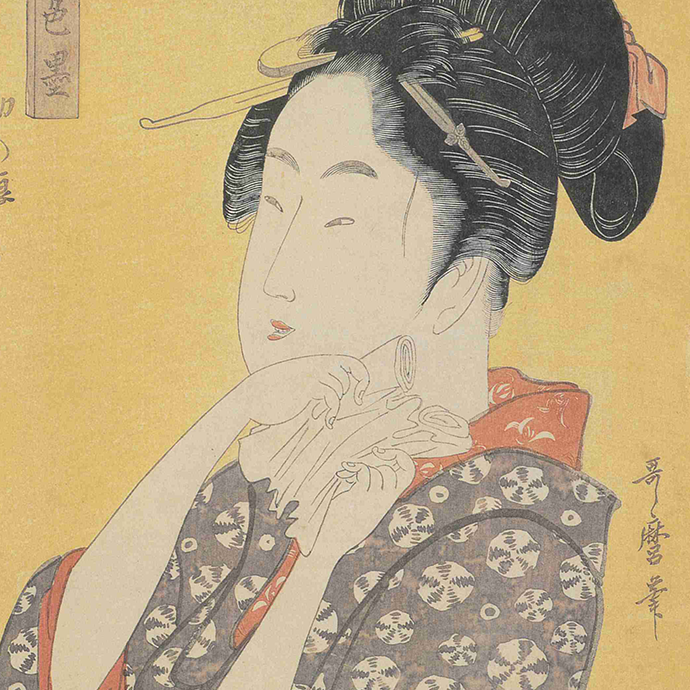
* Bijin-ga of Kitagawa Utamaro (1750-1806)
The Museum has an excellent collection of Utamaro's masterpieces.
The central feature of the Museum is its extensive collection of the pictures and prints of Katsushika Hokusai, arguably the best ukiyo-e artist in history, Utagawa Toyokuni I, who was famed for his yakusha-e, and Utagawa Hiroshige, best known for his landscape painting including Tokaido gojusan-tsugi (The fifty-three stations of Tokaido). The collection of the Museum is among the best in the world in both quality and quantity.

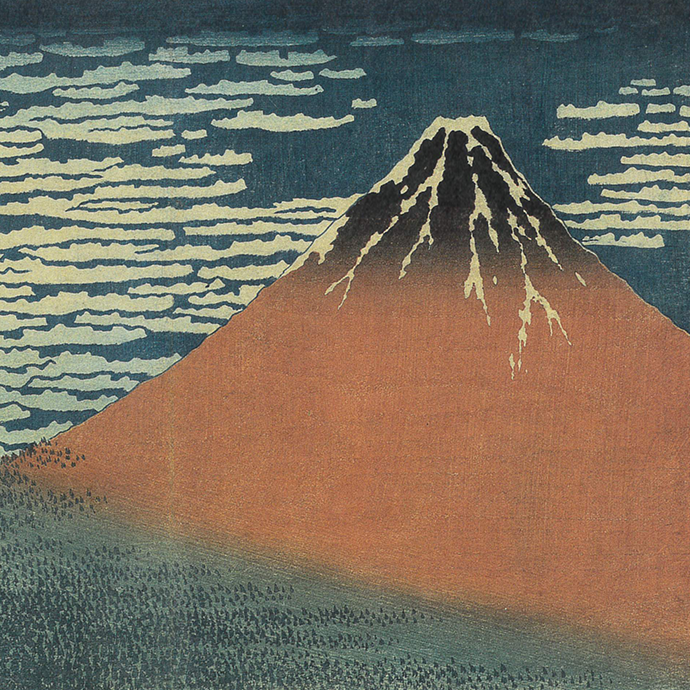
* Katsushika Hokusai (1760-1849)
Fugaku Sanjuu-rokkei Kanagawa Oki Nami-ura
Utagawa Kuniyoshi, who studied Western copper. plate engravings and absorbed their techniques, produced daring, or even fantastic, compositions. Tsukioka Honen, a disciple of Kuniyoshi, developed his master's light and spatial schemes in both Edo and Meiji periods. The Museum has an outstanding collection of both Kuniyoshi and Honen.
Kobayashi Kiyochika, who is often described as the last important ukiyo-e master, skilfully managed light and space on the pictorial plane. The Museum is also famous for its Kiyochika collection.
| Address | 2206-1, Shinkiri, aza, Shimadachi, ooaza, Matsumoto-city Nagano-ken, JAPAN 390-0852 |
|---|---|
| Tel | (+81)0263-47-4440 |
| Fax | (+81)0263-47-0208 |
| info@japan-ukiyoe-museum.com | |
| URL | http://www.japan-ukiyoe-museum.com/ |
| OPEN | 10:00~17:00 (Entrance~16:30) |
| Closed on | Mondays |
| アクセス |
|

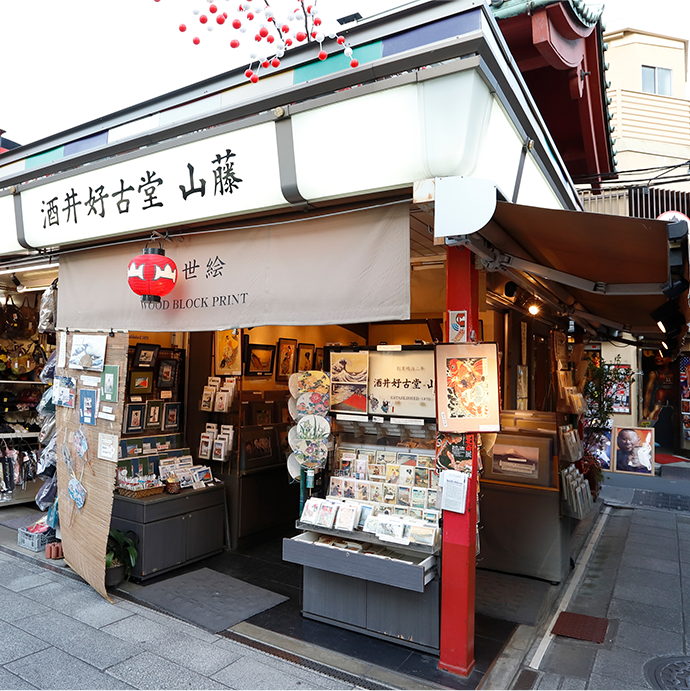
SAKAI KOUKODOU YAMAFUJI
Nakamise shop
Asakusa 1-20-1 Taitouku,
Tokyo, Japan 111-0032
TEL & FAX +81 3-3841-0850
Business Hours: 9:00~18:00

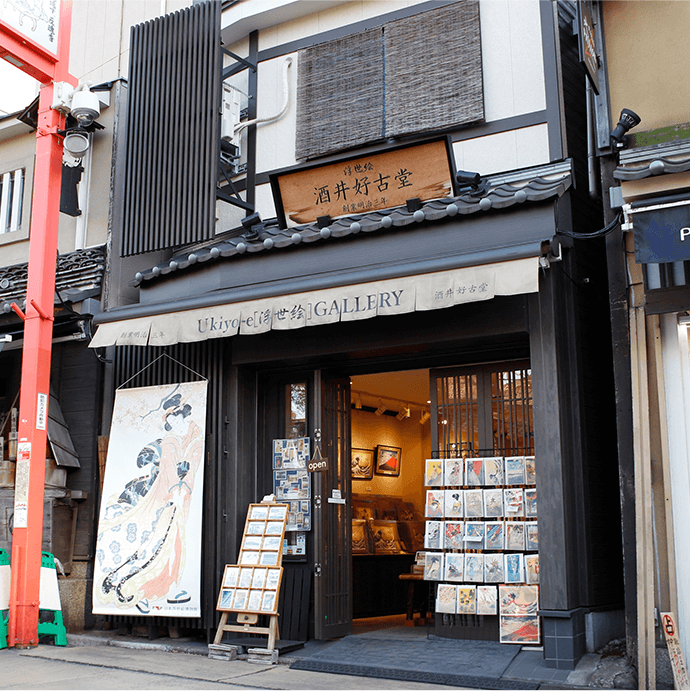
SAKAI KOUKODOU SEIGA
Denpoin store
Asakusa 1-39-1 Taitouku,
Tokyo, Japan 111-0032
TEL & FAX +81 3-6231-7772
Business Hours: 11:00~12:00 15:00~18:00